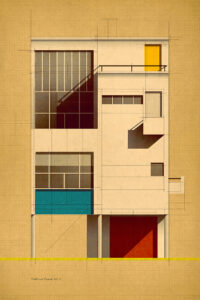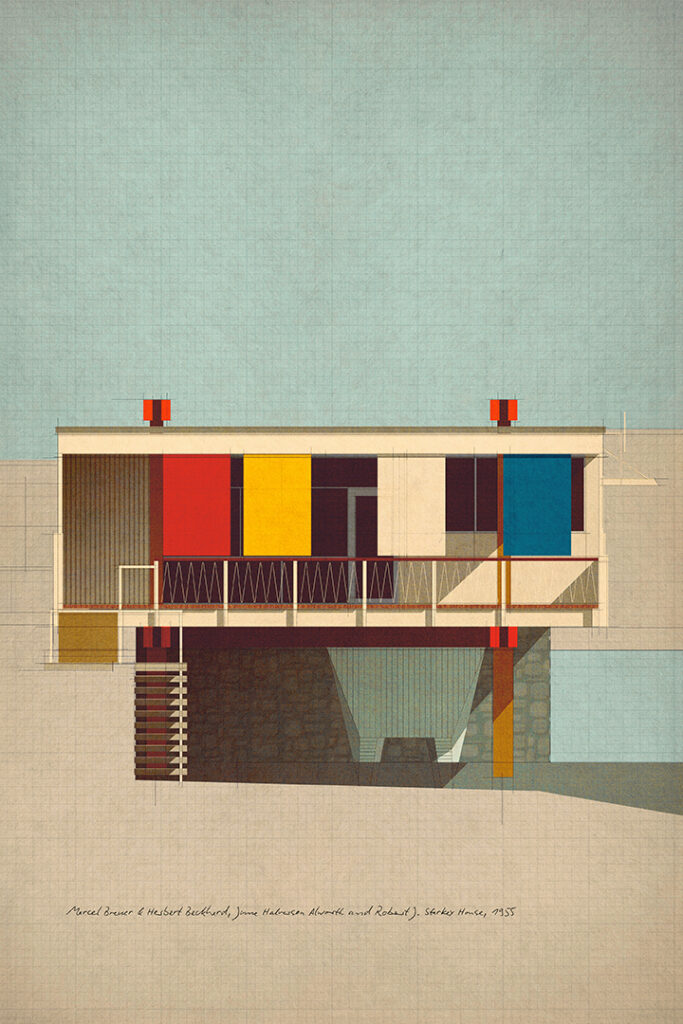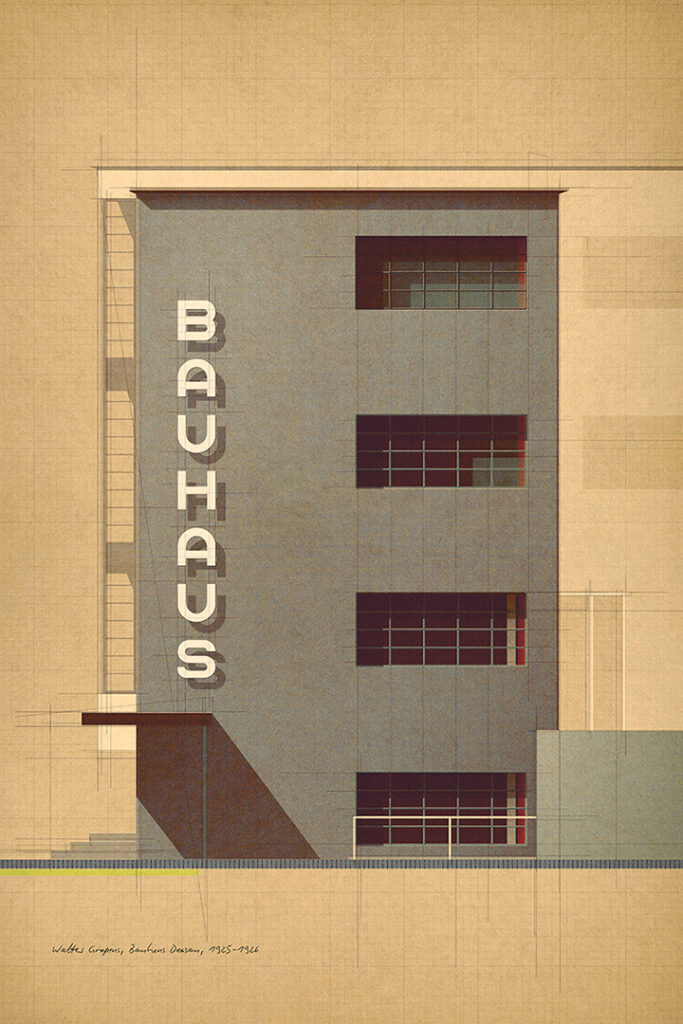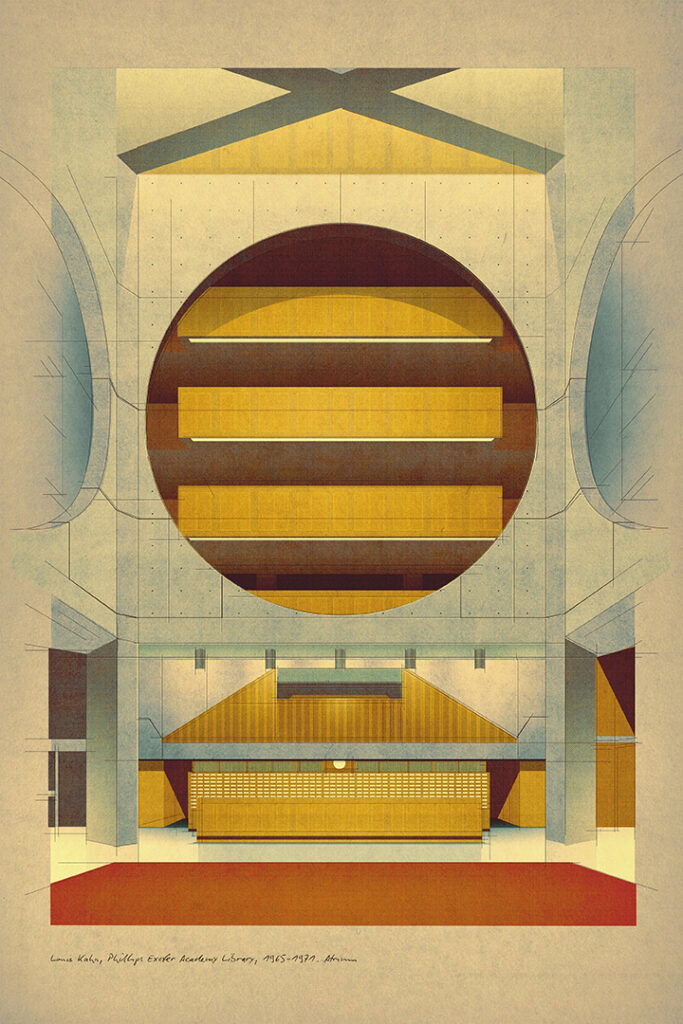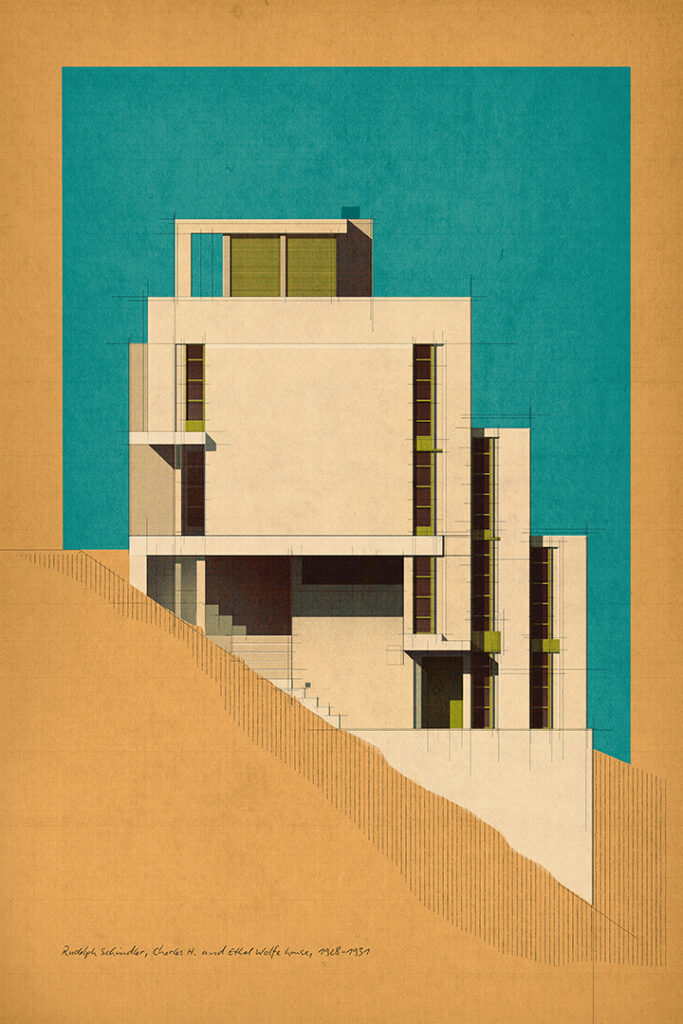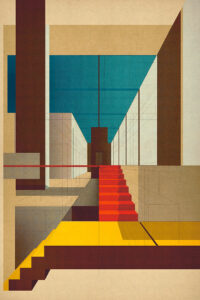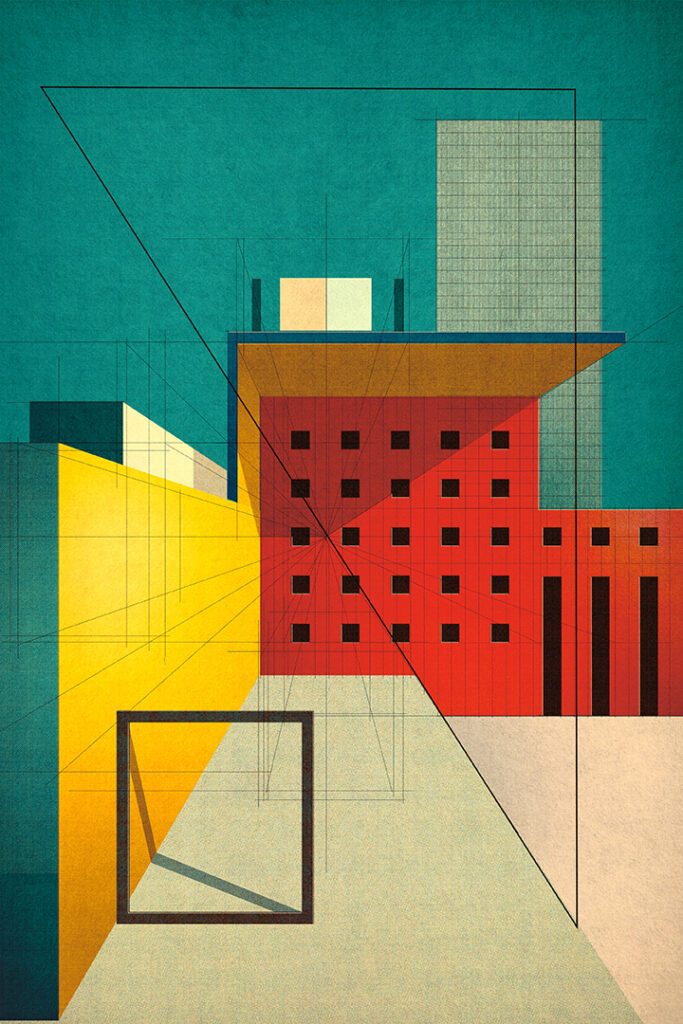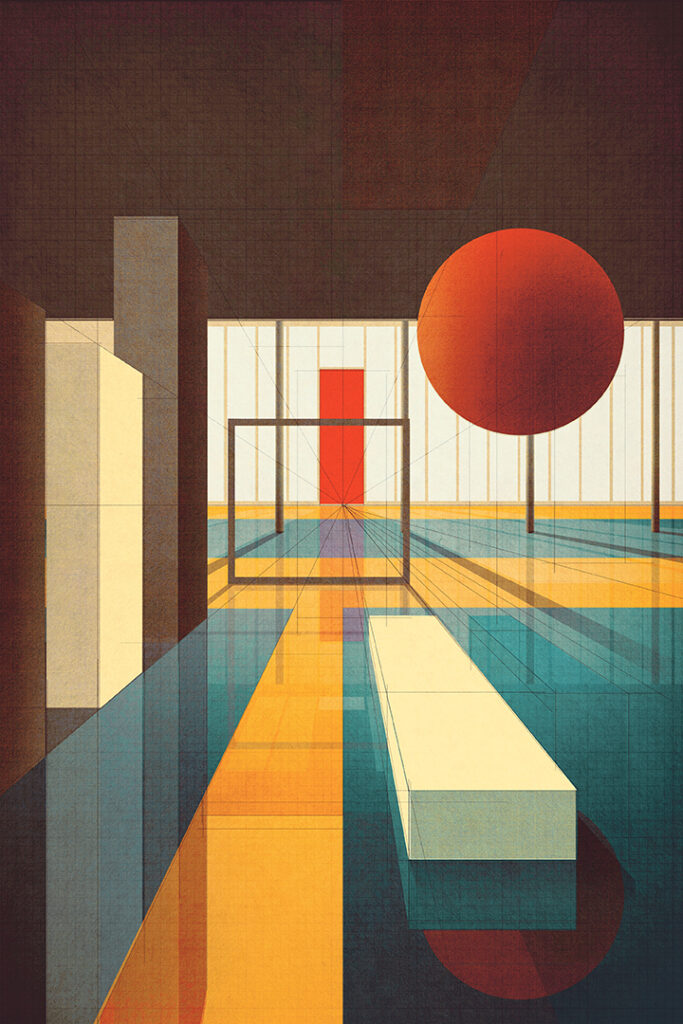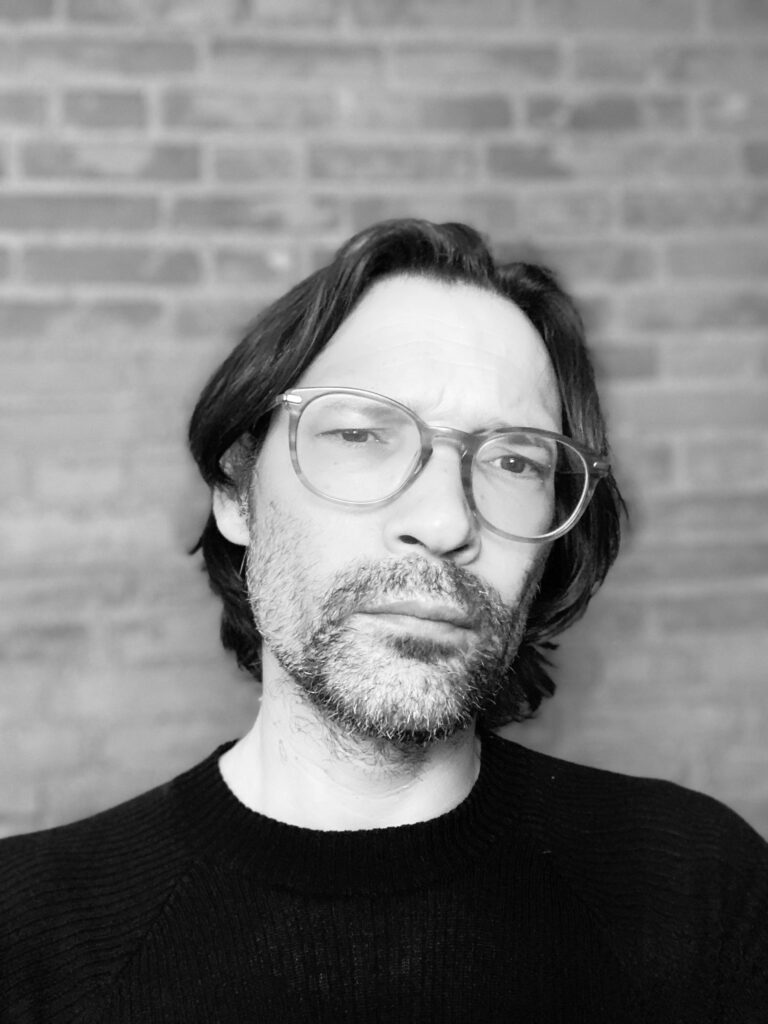
Sander Patelski
Dutch artist Sander Patelski says his goal is to make viewers see 20th Century architecture “with new eyes.” So he illuminates an earlier era’s built forms and facades by presenting them as elevations — architectural-style renderings, but using mixed-media techniques that make “the compositional beauty” of the underlying structures “more apparent,” says the PureHoney artist of the month.
Through his retro palette of warm yet muted colors, paired with the simple lines prized by the Bauhaus and De Stijl movements, viewers can enjoy iconic architecture made on a small-enough scale that the average minimalist can afford it.
Born in a small Dutch mining town, Heerlen, Patelski moved to progressively bigger cities in the Netherlands — Maastricht and then Amsterdam, where he now resides — in pursuit of art as a livelihood. He started out working at a publishing house and later opened his own graphic design business focusing on book covers.
“My practice as a cover designer is completely separate from my ‘free works’ related to architecture and geometry,” Patelski says. “In principle, I take on every assignment, whether it is a mass-market novel, popular non-fiction, or niche poetry. The challenge lies in appropriating the visual language specific to a particular genre and, if possible, giving it a twist.”
Since the pandemic, he has expanded his small-scale, short-run series of works on paper to include architectural prints, abstract compositions, fictional facades, and original interior arrangements.
Patelski focuses on recognizable buildings created in the style of Constructivism, Suprematism, Bauhaus and De Stijl. “The compositions of modernist facades appeal to me because of their combination of minimalism and elegance,” he says, “as well as the experimental use of materials.” Modern architecture fans will easily recognize titles like “Philip Johnson, Glass House (1949),” “Frank Lloyd Wright, Falling Water (Kaufmann Residence) 1934-37,” and “Walter Gropius, Bauhaus Dessau (1925-1926).”
When preparing to recreate an architectural drawing, Patelski spends copious amounts of time collecting visual materials to get the best possible understanding of the building. Because this type of artwork relies on the intersection of geometric swaths of color paired with flattened lines, much of the depth and form of the buildings is communicated through Patelski’s expert use of shadow and perspective. His process for mid-century works draws from the original architects’ own layer-by-layer drafting techniques, updated with 21st Century technologies. Pressure of pencil, thick or thinness of line, and application of watercolor all make their appearance in digital form.
Similar to how Modernists rejected the Beaux Arts ideals of balance and hierarchy, Patelski also is not married to rigid drawing practices. “I first draw the pencil lines and leave them as they are,” he says, “even if they no longer align perfectly.” Intersecting planes — a hallmark of Modernism — appear often in Patelski’s work, stone and glass panes magically converging mid-air in a celebration of formal beauty and a nod to the mastery of man over materials.
There may be no better crash course in the work of the Modernist architecture greats than a visit to Patelski’s online gallery. Alongside Johnson, Wright and Gropius are Le Corbusier, Mies van der Rohe and more. Beyond the architectural drawings, Patelski also creates geometric compositions on paper that give off M.C. Escher endless tessellation vibes and a muted neon noir.
The artist is currently preparing for his first solo exhibition, “Icons of Modernism,” at Amsterdam Artspace Contemporary Gallery. He is also assembling print series that group his newer and earlier pieces into special edition collections. And he still designs book covers.
Follow Sander Patelski at studiosanderpatelski.nl ~ Kelli Bodle

